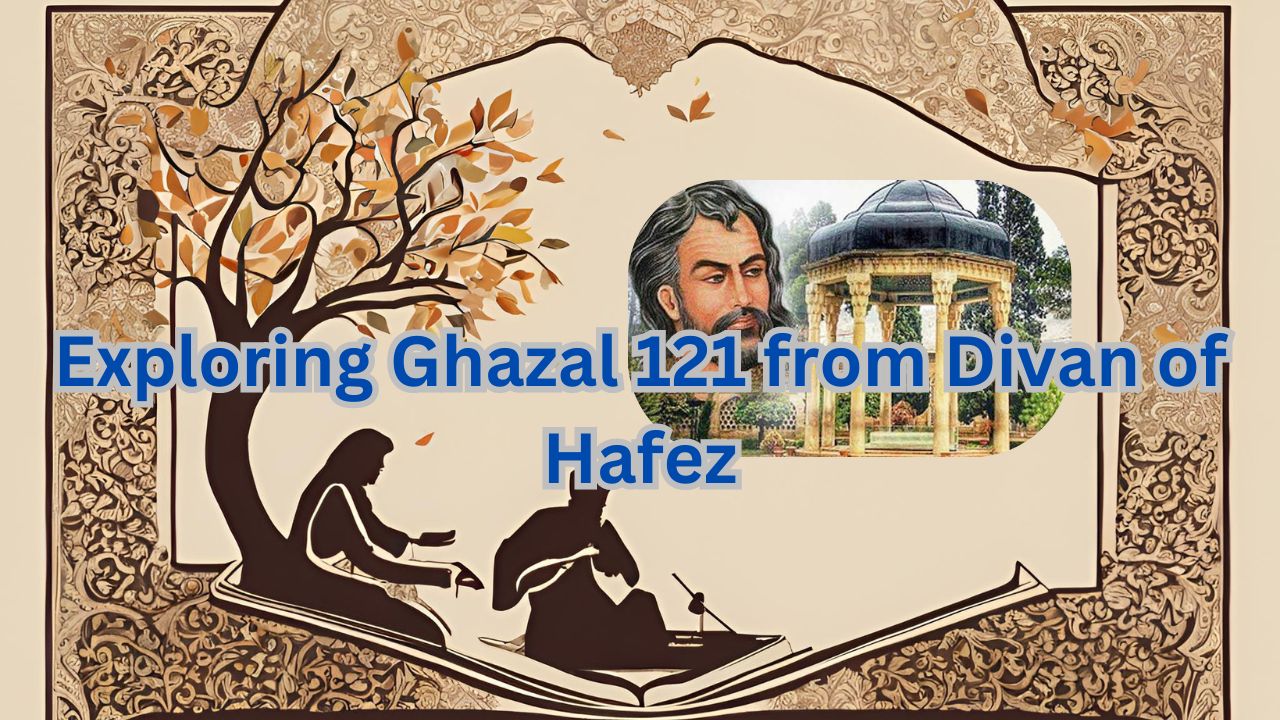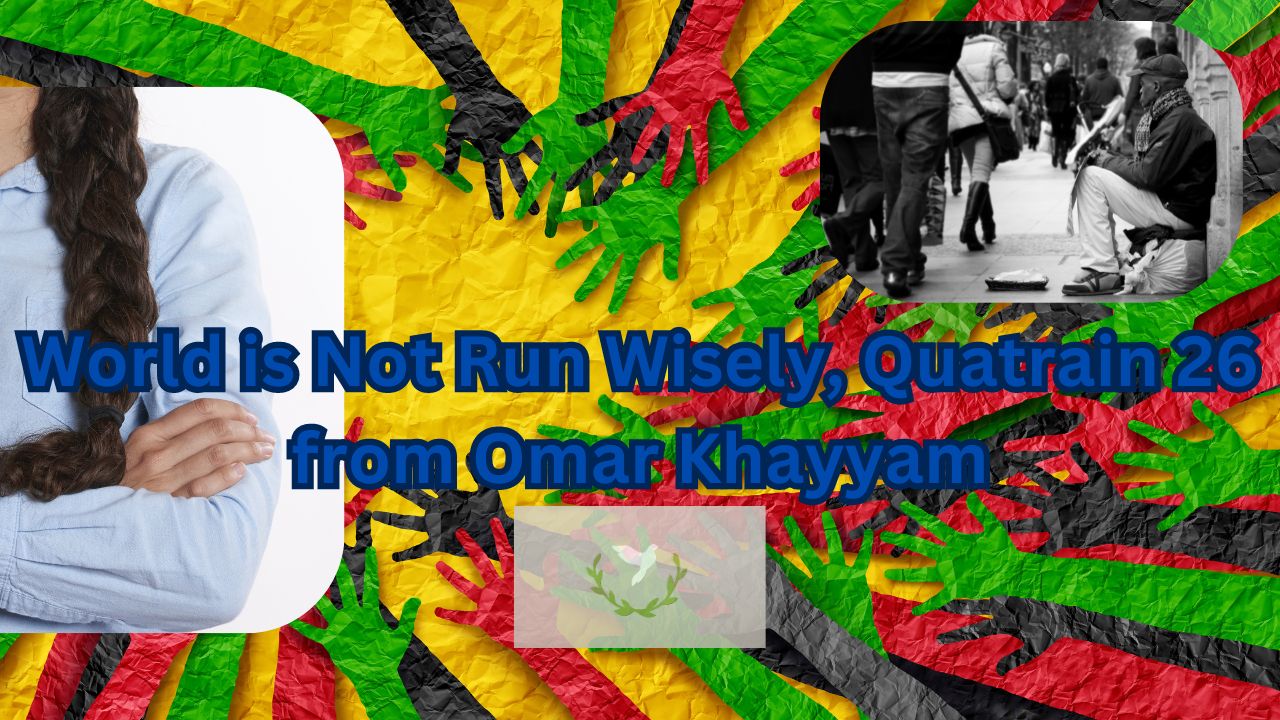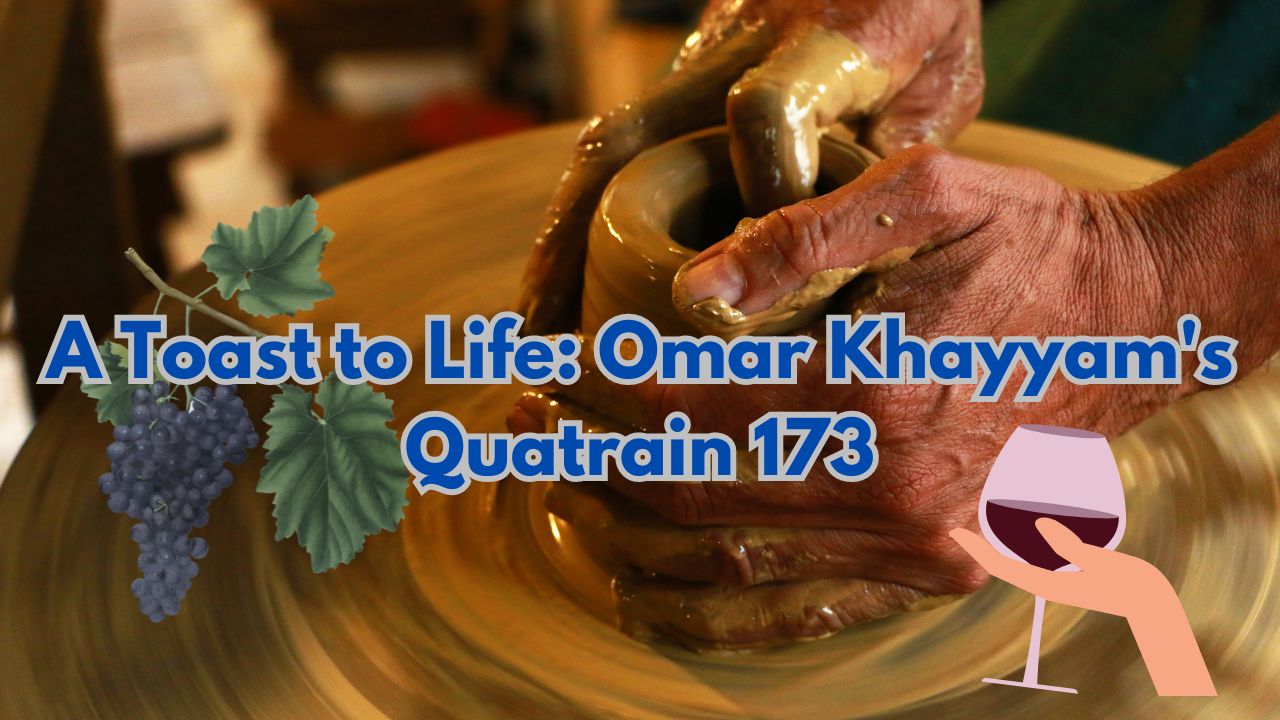In this post, we explore the exquisite poetry of Hafez through a close examination of Ghazal 121 from the Divan. We will embark on a verse-by-verse journey, exploring the original Persian text, its English translation, and a detailed analysis of each line. This deep dive aims to uncover the rich layers of meaning and beauty embedded within this timeless masterpiece.
هر آن کو خاطرِ مجموع و یارِ نازنین دارد
سعادت همدم او گشت و دولتْ همنشین دارد
Whoever has a collected heart and a lovely beloved
Has found fortune as a companion and prosperity as a neighbor.
Analysis:
Hafez, in his characteristically lyrical style, opens this ghazal by establishing a profound connection between the state of one's heart, the presence of a beloved, and the resulting attainment of fortune and prosperity.
-
"هر آن کو خاطرِ مجموع": The phrase "هر آن کو" (whoever) immediately establishes a universal truth, suggesting that the following statement applies to all individuals who meet the given criteria. "خاطرِ مجموع" refers to a heart that is collected, composed, and at peace. This state of heart is essential for attracting positive energies and experiences.
-
"و یارِ نازنین دارد": The presence of a "یارِ نازنین" (lovely beloved) is juxtaposed with the "خاطرِ مجموع." This suggests that a harmonious relationship with a beloved can contribute to a collected heart. The beloved here is not merely a romantic partner but also symbolizes a higher spiritual connection or a source of inspiration.
-
"سعادت همدم او گشت": The consequence of having a collected heart and a beloved is the acquisition of "سعادت" (fortune) as a "همدم" (companion). This implies that fortune is not merely a chance occurrence but rather a natural outcome of a spiritually aligned existence.
-
"و دولتْ همنشین دارد": "دولت" (prosperity) is described as a "همنشین" (neighbor), further emphasizing the idea that when the heart is at peace and love is present, material prosperity is a natural consequence.
In essence, the first line of this ghazal encapsulates Hafez's belief in the interconnectedness of the spiritual and material realms. A tranquil heart, adorned by the love of a beloved, is the key to unlocking the doors of fortune and prosperity. The line beautifully conveys the idea that true wealth lies not just in material possessions but also in the richness of one's inner world and the quality of one's relationships.
***
حریمِ عشق را درگَه، بسی بالاتر از عقل است
کسی آن آستان بوسد، که جان در آستین دارد
The threshold of the realm of love is much higher than reason.
Only one who has their life in their sleeve can kiss that threshold.
Analysis of Line Two
In this verse, Hafez underscores the mystical and transcendent nature of love, positioning it far beyond the realm of reason.
The phrase "threshold of the realm of love" establishes love as a sacred and inaccessible place, suggesting that it is a domain beyond the grasp of intellect. By asserting that this realm is "much higher than reason," Hafez emphasizes the irrationality and inexplicable quality of love.
The act of "kissing the threshold" symbolizes reverence and humility. To approach this sacred space requires a profound sense of respect and devotion. The image of someone with their "life in their sleeve" is a powerful metaphor for complete surrender and vulnerability. It suggests that only those willing to risk everything for love can truly enter its domain.
Overall, this line conveys the idea that love is a spiritual journey that demands total self-sacrifice and a willingness to transcend the limitations of rational thought. It invites the reader to contemplate the depths of human emotion and the divine nature of love.
***
دهانِ تَنگِ شیرینش، مگر مُلکِ سلیمان است
که نقشِ خاتمِ لعلش، جهان زیرِ نگین دارد
Her sweet, narrow mouth must be Solomon's kingdom,
For the imprint of her ruby seal has the world beneath its gem.
Analysis of Line Three
This line employs a striking metaphor to convey the captivating power of the beloved's beauty and the immense influence she wields.
-
"Her sweet, narrow mouth must be Solomon's kingdom": By comparing the beloved's mouth to Solomon's kingdom, Hafez evokes imagery of immense wealth, power, and dominion. Solomon was renowned for his wisdom and the grandeur of his kingdom, so this comparison suggests that the beloved's mouth is a source of incomparable beauty and allure.
-
"For the imprint of her ruby seal has the world beneath its gem": The image of a ruby seal with the world beneath it is a powerful symbol of control and authority. The "ruby seal" is likely a reference to the beloved's lips, which are described as being as precious as rubies. The implication is that the beloved has the power to control and influence the world simply through her beauty and charm.
Interpretation:
-
The beloved as a powerful force: This line suggests that the beloved possesses an almost divine power over the speaker. Her beauty is so overwhelming that it can captivate and control even the most powerful individuals.
-
The theme of beauty and power: The connection between beauty and power is a recurring theme in Persian poetry. Hafez suggests that physical beauty can be a source of immense influence and control.
-
The use of hyperbole: The comparison between the beloved's mouth and Solomon's kingdom is a hyperbolic statement that emphasizes the speaker's infatuation and the overwhelming power of her beauty.
In essence, this line celebrates the beloved's beauty as a source of immense power and influence. Through vivid imagery and metaphor, Hafez conveys the speaker's awe and admiration for the beloved.
Additional points to consider:
-
The symbolism of the ruby and its association with love, passion, and royalty.
-
The concept of the "perfect woman" in Persian poetry and how the beloved in this ghazal fits into that ideal.
-
The role of hyperbole and metaphor in conveying the intensity of romantic love.
***
لبِ لعل و خطِ مشکین، چو آنش هست و اینش هست
بنازم دلبرِ خود را، که حُسنش آن و این دارد
With ruby lips and a dark mole, since she has both,
I praise my beloved, whose beauty has both.
Analysis of Line Four
In this verse, Hafez delves further into the physical beauty of his beloved, focusing on two specific features: her ruby lips and her dark mole.
-
"With ruby lips and a dark mole": These two features are often mentioned in Persian poetry as symbols of beauty. The "ruby lips" evoke imagery of passion, desire, and sweetness, while the "dark mole" is considered a mark of beauty and allure.
-
"Since she has both": The phrase "since she has both" emphasizes the completeness of the beloved's beauty. The combination of these two features creates a perfect harmony.
-
"I praise my beloved": The speaker expresses admiration and adoration for his beloved, highlighting her unique beauty.
Interpretation:
-
Emphasis on physical beauty: This line is a celebration of the beloved's physical attributes. Hafez uses vivid imagery to create a picture of a stunningly beautiful woman.
-
The ideal of beauty: The combination of ruby lips and a dark mole represents a traditional ideal of beauty in Persian poetry. These features were often associated with femininity, sensuality, and allure.
-
The role of the beloved in Persian poetry: The beloved is often idealized in Persian poetry and is seen as a source of inspiration and spiritual enlightenment.
In essence, this verse is a simple yet evocative celebration of the beloved's beauty. Through the use of vivid imagery and poetic language, Hafez creates a portrait of a woman who is both physically attractive and spiritually captivating.
Additional points to consider:
-
The symbolism of the ruby lips and the dark mole in Persian culture.
-
The role of the beloved in Persian mysticism.
-
The relationship between physical beauty and spiritual beauty in Hafez's poetry.
***
به خواری منگر ای مُنعِم، ضعیفان و نحیفان را
که صدرِ مجلسِ عشرت، گدای رهنشین دارد
Do not look down on the weak and feeble, O benefactor,
For the head of the pleasure gathering has a beggar as its guest.
Analysis of Line Five
In this verse, Hafez shifts the focus from the physical beauty of the beloved to a more philosophical and moral theme.
-
"Do not look down on the weak and feeble": This is a direct address to a benefactor or a powerful individual. The speaker is cautioning this person against arrogance and condescension towards the less fortunate.
-
"For the head of the pleasure gathering has a beggar as its guest": This line presents a paradox. The "head of the pleasure gathering" implies a place of luxury and abundance, while a "beggar" is someone who is destitute and lacking. By placing these two concepts together, Hafez suggests that even in the most opulent settings, there is always room for humility and compassion.
Interpretation:
-
The impermanence of wealth and power: This verse implies that wealth and power are fleeting and that even the most fortunate individuals can experience hardship.
-
The importance of humility: The speaker is advocating for humility and compassion, suggesting that true greatness lies not in material wealth or social status, but in one's character.
-
A critique of social inequality: By contrasting the wealthy and the poor, Hafez may be offering a social commentary on the inequalities of his time.
In essence, this verse is a reminder that everyone, regardless of their social status or material possessions, is vulnerable and subject to the vicissitudes of life. It encourages compassion and empathy for those who are less fortunate.
Additional points to consider:
-
The concept of divine justice and the idea that even the powerful are not immune to the consequences of their actions.
-
The role of the Sufi mystic in Persian society and their emphasis on humility and compassion.
-
The use of paradox in Persian poetry to convey complex ideas.
***
چو بر رویِ زمین باشی، توانایی غنیمت دان
که دورانْ ناتوانیها، بسی زیرِ زمین دارد
While you are on the earth, consider ability a treasure,
For there are many periods of weakness beneath the earth.
Analysis of Line Six
In this verse, Hafez offers a profound reflection on the transience of life and the importance of appreciating one's abilities while they last.
-
"While you are on the earth, consider ability a treasure": This line encourages the reader to value their capabilities and talents. It suggests that these abilities are precious gifts that should not be taken for granted.
-
"For there are many periods of weakness beneath the earth": This metaphor alludes to the grave and the afterlife. It suggests that in death, one is powerless and unable to enjoy the fruits of their labor.
Interpretation:
-
The impermanence of life: Hafez reminds us that life is fleeting and that our abilities may not always be with us.
-
The importance of gratitude: The verse encourages gratitude for one's abilities and a recognition of the fragility of human life.
-
A philosophical reflection on life and death: The reference to the "periods of weakness beneath the earth" invites contemplation on the meaning of existence and the nature of mortality.
In essence, this verse serves as a reminder to live life to the fullest and to appreciate the blessings one has been given. It highlights the importance of using one's abilities to make a positive impact on the world.
Additional points to consider:
-
The concept of carpe diem (seize the day) in Persian poetry.
-
The relationship between this verse and Sufi mysticism, which emphasizes the impermanence of the material world.
-
The use of metaphor to convey deep philosophical ideas.
***
بلاگردانِ جان و تن، دعایِ مستمندان است
که بیند خیر از آن خرمن که ننگ از خوشه چین دارد؟
The prayer of the needy is for those who torment body and soul,
For who sees good in that harvest whose reaper is ashamed?
Analysis of Line Seven
In this verse, Hafez offers a scathing critique of those who cause suffering and misfortune.
-
"The prayer of the needy is for those who torment body and soul": Here, the speaker is expressing the sentiments of those who are oppressed or marginalized. They are calling for divine retribution on those who cause them harm.
-
"For who sees good in that harvest whose reaper is ashamed": This is a powerful metaphor. The "harvest" represents the fruits of one's actions, and the "reaper" is the person who gathers those fruits. The implication is that if the reaper is ashamed of the harvest, then the harvest itself must be tainted.
Interpretation:
-
A call for justice: This verse is a cry for justice and a condemnation of those who inflict suffering on others.
-
The consequences of evil deeds: Hafez suggests that evil actions will ultimately lead to negative consequences, both for the perpetrator and for society as a whole.
-
The interconnectedness of humanity: The verse implies that the actions of one individual can have far-reaching consequences for others.
In essence, this verse is a moral commentary on the nature of evil and the importance of compassion. It suggests that those who cause suffering will ultimately face the consequences of their actions.
Additional points to consider:
-
The concept of karma in Persian culture and its relationship to this verse.
-
The role of the poet as a social critic.
-
The use of metaphor and imagery to convey complex ideas.
***
صبا از عشقِ من رمزی، بگو با آن شهِ خوبان
که صد جمشید و کیخسرو، غلامِ کمترین دارد
O gentle breeze, tell a secret of my love to that beautiful king,
That a hundred Jamshids and Kay Khusrows are slaves to the least of me.
Analysis of Line Eight
In this verse, Hafez uses a bold hyperbole to express the intensity of his love and the perceived superiority of his beloved.
-
"O gentle breeze, tell a secret of my love to that beautiful king": The speaker is asking the breeze to carry a message to his beloved, who is likened to a "beautiful king". This is a common trope in Persian poetry, where the beloved is often elevated to a divine or royal status.
-
"That a hundred Jamshids and Kay Khusrows are slaves to the least of me": Jamshid and Kay Khusrow were legendary Persian kings, symbolizing power, wealth, and wisdom. By claiming that even a hundred of these kings are "slaves" to the "least of me", Hafez is exaggerating the extent of his beloved's influence over him. This is a way of emphasizing the intensity of his love and devotion.
Interpretation:
-
The power of love: The verse suggests that love has the power to subjugate even the most powerful individuals.
-
The divine nature of the beloved: By comparing the beloved to a king and suggesting that even legendary figures are his or her "slaves", Hafez is implying that the beloved possesses divine qualities.
-
Hyperbole and metaphor: The use of hyperbole and metaphor is a common feature of Persian poetry, and it allows poets to express complex emotions and ideas in a vivid and memorable way.
In essence, this verse is a powerful expression of romantic love and devotion. By using exaggerated language and comparing his beloved to legendary figures, Hafez conveys the intensity of his feelings and the overwhelming power that the beloved has over him.
Additional points to consider:
-
The role of the beloved as a symbol of divine beauty and perfection in Persian poetry.
-
The concept of divine love in Sufism and its influence on Persian poetry.
-
The use of mythological and historical figures as metaphors in Persian literature.
***
و گر گوید نمیخواهم، چو حافظ عاشقِ مفلس
بگوییدش که سلطانی، گدایی همنشین دارد
And if he says he does not want, like the impoverished lover Hafez,
Tell him that kingship has poverty as its companion.
Analysis of Lines 9 and Final Line
In this final line, Hafez positions himself as a humble and impoverished lover. This self-referential approach is common in Persian poetry, where poets often portray themselves as suffering for love. The line implies that the speaker's love is unrequited, a theme frequently explored in Hafez's work.
Overall Analysis
The ghazal concludes with a sense of resignation and acceptance. By presenting himself as a "poor lover," Hafez creates an image of vulnerability and longing. The absence of a traditional tenth line leaves the poem open-ended, inviting the reader to contemplate the complexities of love, loss, and the human condition.
This unconventional structure, combined with the poignant imagery and emotional depth, contributes to the ghazal's enduring power and resonance.
Key Points:
-
Self-reference: Hafez positions himself as a humble and impoverished lover.
-
Theme of unrequited love: The line implies that the speaker's love is unrequited.
-
Open-ended conclusion: The absence of a tenth line invites contemplation.
***





